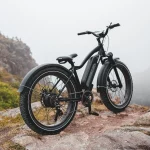In the realms of manufacturing and construction, ABS and PVC stand out as pivotal plastics, each boasting distinct advantages in terms of durability, chemical resistance, environmental considerations, and affordability.
Their versatility extends across various applications, including piping systems, automotive parts, and building materials.
Delving deep into the characteristics and uses of ABS vs PVC, this article aims to serve as a comprehensive guide, empowering readers to make informed decisions when selecting materials to meet the specific demands of their projects.
Introduction Of ABS And PVC
ABS (Acrylonitrile Butadiene Styrene) is a thermoplastic polymer composed of three distinct monomers: acrylonitrile, butadiene, and styrene.
This unique chemical structure endows ABS with several excellent properties, including high strength, good toughness, and superior impact resistance.
Moreover, ABS is easy to process and color, capable of being molded through injection molding, extrusion, and 3D printing, offering tremendous flexibility in design and engineering fields.
PVC (Polyvinyl Chloride) is a polymer made by polymerizing vinyl chloride monomer and is one of the most widely used types of plastic globally.
It typically comes in two forms: rigid PVC and flexible PVC. Rigid PVC is commonly used in the construction industry for pipes, windows, and doors.
In contrast, flexible PVC, made soft by the addition of plasticizers, is used for manufacturing insulation layers for wires, medical devices, flooring, and other flexible items.
PVC is renowned for its excellent chemical stability, corrosion resistance, water resistance, and electrical insulating properties, making it applicable in many fields.
Additionally, PVC has good flame retardant properties, making it an ideal choice for manufacturing electrical cables and construction materials.
ABS vs PVC: Advantages And Disadvantages
ABS plastic is renowned for its high impact strength, making it exceptionally suited for products that need to withstand impacts or pressure.
Additionally, the ease of processing ABS makes it an ideal material for designing complex products, as it can be effortlessly molded through injection molding, extrusion, and 3D printing techniques.
ABS can also undergo sanding and painting to achieve a high-gloss finish, making it suitable for consumer goods requiring a premium appearance, such as smartphone cases and furniture.
However, ABS has its limitations. Compared to PVC, ABS exhibits weaker resistance to certain chemicals, which may restrict its use in specific chemical environments, like containers or pipes for certain chemicals.
Moreover, the cost of high-quality ABS material is relatively high, potentially increasing the overall cost of products, especially in large-scale production.
On the other hand, PVC boasts excellent chemical resistance, allowing it to withstand corrosion from acids, bases, salts, and most solvents, making it the material of choice for handling and storing chemical substances.
Its good electrical insulation properties also secure a significant place in the electrical engineering field, particularly as a primary material for electrical wire and cable insulation.
Considering cost-effectiveness, PVC not only has lower raw material costs but is also easy to mass-produce, making it a preferred material for projects where economy is a concern.
Moreover, PVC’s adaptability is extensive, as it can be made into rigid materials for construction industry pipes and windows or softened with plasticizers for use in medical devices, flooring materials, and more, offering a broad range of applications.
One of the most significant drawbacks of PVC is its negative environmental impact during production, use, and disposal.
The manufacturing of PVC can release harmful chemicals, such as chlorine gas and dioxins, posing threats to the environment and human health.
Additionally, PVC becomes brittle at low temperatures, limiting its use in cold environments. This brittleness can lead to material fractures, affecting product performance and safety.
ABS vs PVC: Environmental Impact
Despite the many advantages of ABS and PVC that have led to their widespread use, the negative environmental impacts they cause cannot be ignored.
First, the production processes of ABS and PVC release harmful substances such as styrene, acrylonitrile, chlorine gas, and dioxins, all of which have potential adverse effects on the environment and human health.
Secondly, both materials are non-biodegradable, difficult and costly to recycle, and their long-term presence in the environment can lead to soil and water pollution.
Furthermore, the plasticizers added to soft PVC (such as phthalates) can leach out of products, not only contaminating the environment but also impacting human health, especially that of children.
ABS vs PVC: Safety Considerations
A significant safety concern with ABS comes from the release of potentially harmful styrene substances during its production and heating processes, which can pose great harm to human health.
On the other hand, the chlorine content in PVC’s structure leads to the release of dioxins during its production and incineration disposal, which are harmful to both human health and the environment.
Additionally, the use of certain phthalates as plasticizers in PVC raises health concerns due to their potential impact on the human hormonal system.
However, when comparing the safety of ABS vs PLA, PLA, a biodegradable plastic made from renewable resources, offers a more environmentally friendly option with lower health risks associated with its production and use.
Application Field
When choosing between ABS and PVC as manufacturing materials, different application scenarios often lead to a preference for one material over the other.
In the automotive industry, the toughness and strength of ABS make it suitable for manufacturing dashboards, body parts, interior components, and safety-related components.
The ability of ABS to resist falls and impacts is crucial for protecting sensitive internal components, making it the prime choice for casings of electronic and electrical devices.
Furthermore, the non-toxicity of ABS makes it an ideal material for children’s toys. It can be molded into complex shapes and painted in bright colors.
PVC is the material of choice for manufacturing pipes, drainage pipes, and protective tubes for wires and cables, especially in the construction and civil engineering fields, as these applications require materials with good chemical resistance and water resistance.
Due to its high plasticity, good chemical resistance, and biocompatibility, soft PVC is often used to make blood bags, infusion tubes, respirators, and disposable medical devices.
The weather resistance and flame retardancy of PVC are also utilized in everyday items such as window frames, flooring, and roofing materials.
Conclusion
In conclusion, ABS and PVC each display unique advantages across different application areas, and the final choice of material ultimately depends on the specific conditions of the project. Although there are safety concerns associated with them, appropriate handling and adherence to recycling and disposal regulations can mitigate some of the risks.







